Saturday Shoutout / Stalking The Yeti
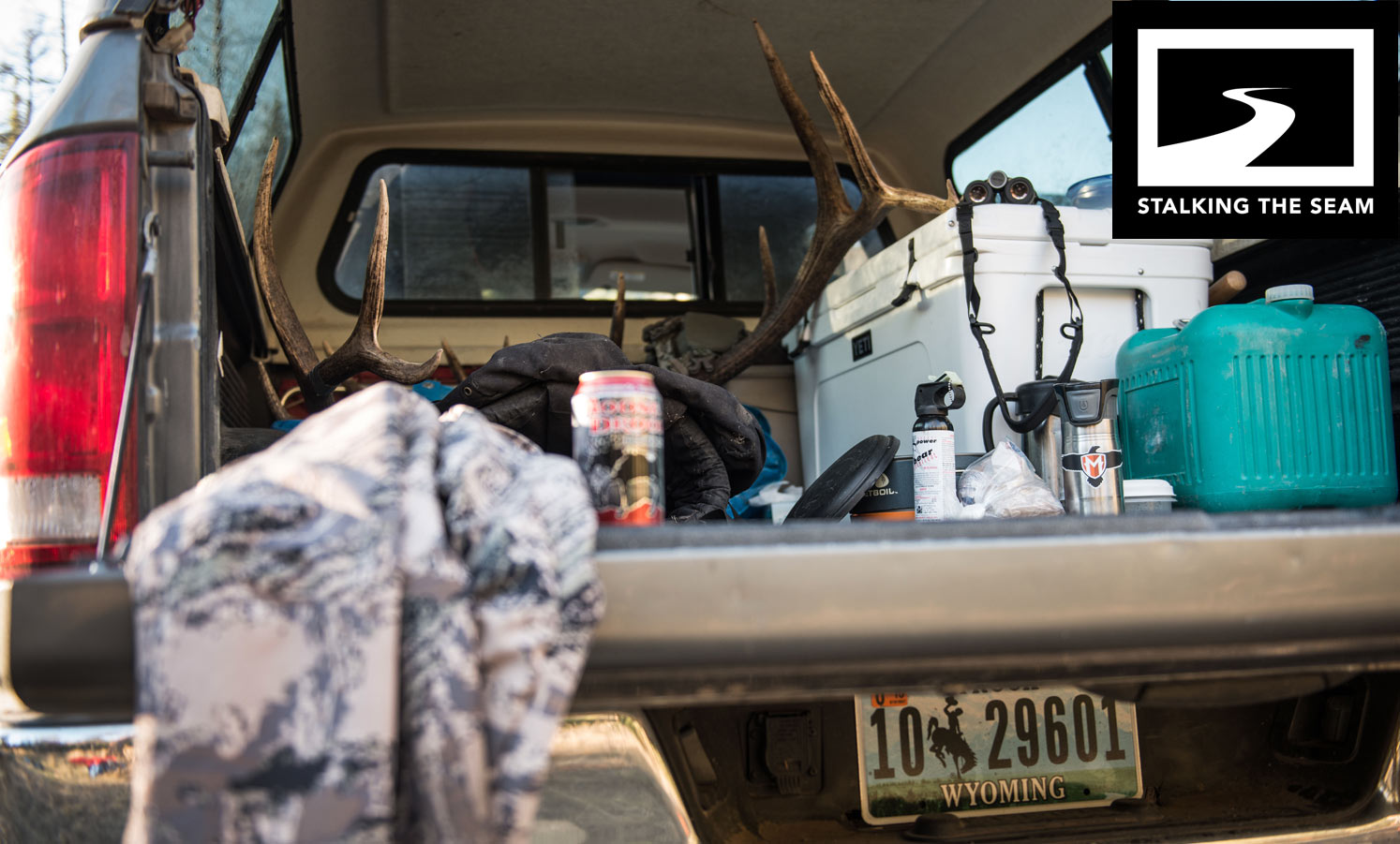
“Do you really need a Yeti cooler?” Asks Steven Brutger, of Staling The Seam.
Love them or hate them, the Yeti cooler is one of the biggest success stories in the outdoor industry. With sales, possibly equaled only by GoPro, Yeti coolers have become the new status symbol for the outdoorsman with everything. And like all status symbols, they don’t come cheap.
While a lot of the guys you see driving around with Yeti stickers on their cars don’t need, or often even own a Yeti, there are folks who legitimately need that level of performance out of their cooler. Steven Brutger, of Stalking The Seam, is an avid hunter, angler and ex-NOLS instructor. He has a pretty good grasp on what you need and don’t need in a cooler.
In his article, “Do You Really Need A Yeti, ” he does a great job of separating the facts from the hype. Reading this article could save you $300-$400 or it could just talk you into spending it. Either way, you’ll know if that Yeti on you Christmas list is something you need or just want.
CHECK OUT, “DO YOU REALLY NEED A YETI”
Read More »Airlock, The Better Bobber
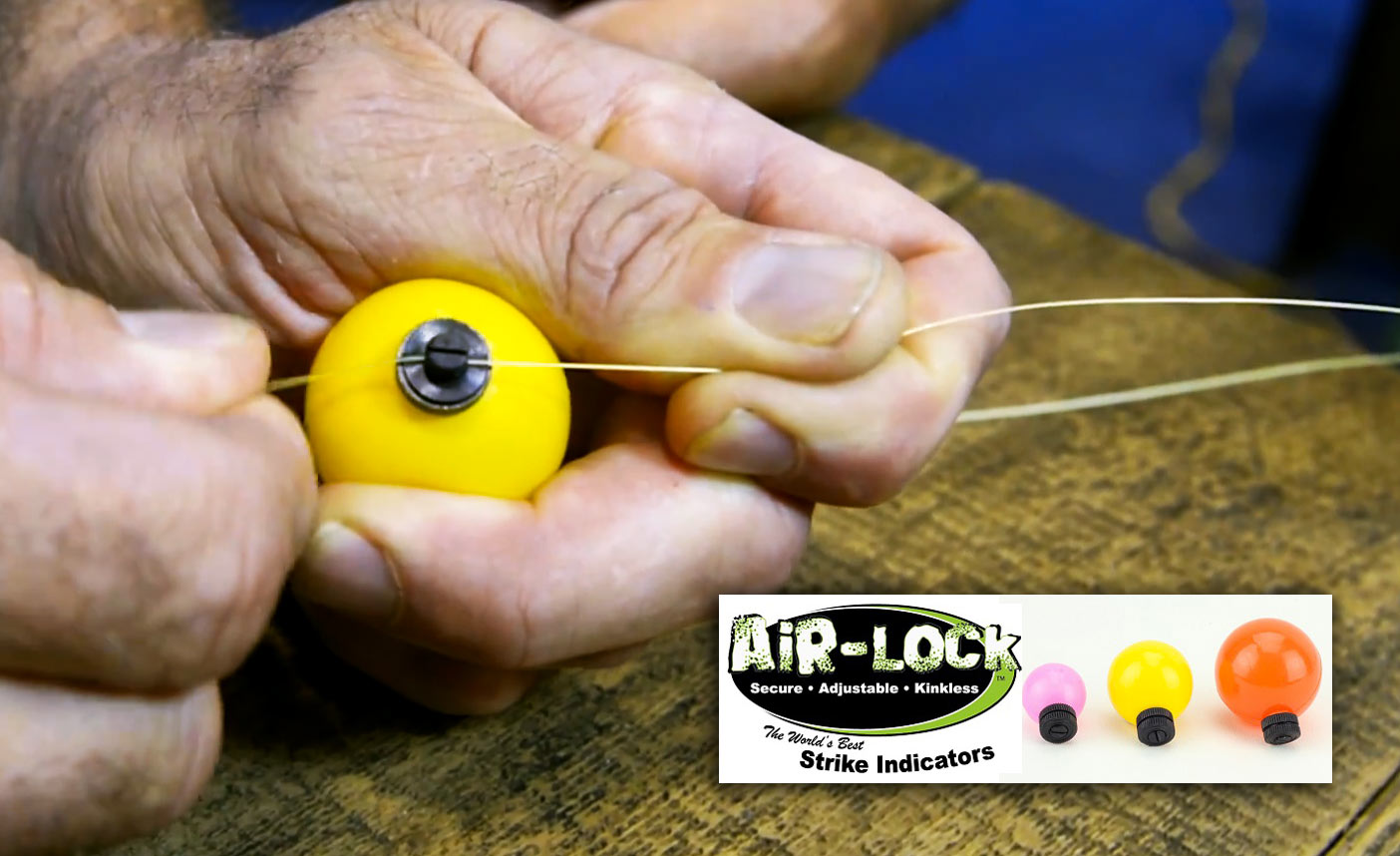
With the Bobber Wars Roaring, it’s the perfect time to talk about strike indicators.
We all fish indicators, so why not fish a better indicator. If you like the bobber style indicators, you’ll love Airlock indicators. Their ingenuous post and nut attachment system is fast and easy, will not slide once tightened and won’t put a mark on your leader.
I caught up with Tim Rajeff at IFTD and he showed us the features and how to set up the Airlock strike Indecator. I’m including a clever video on how to set up the Airlock as an adjustable 90 degree indicator.
CHECK OUT THESE VIDEOS FOR THE DETAILS.
Read More »Fly Fishing Tactics for Bass in the Fall
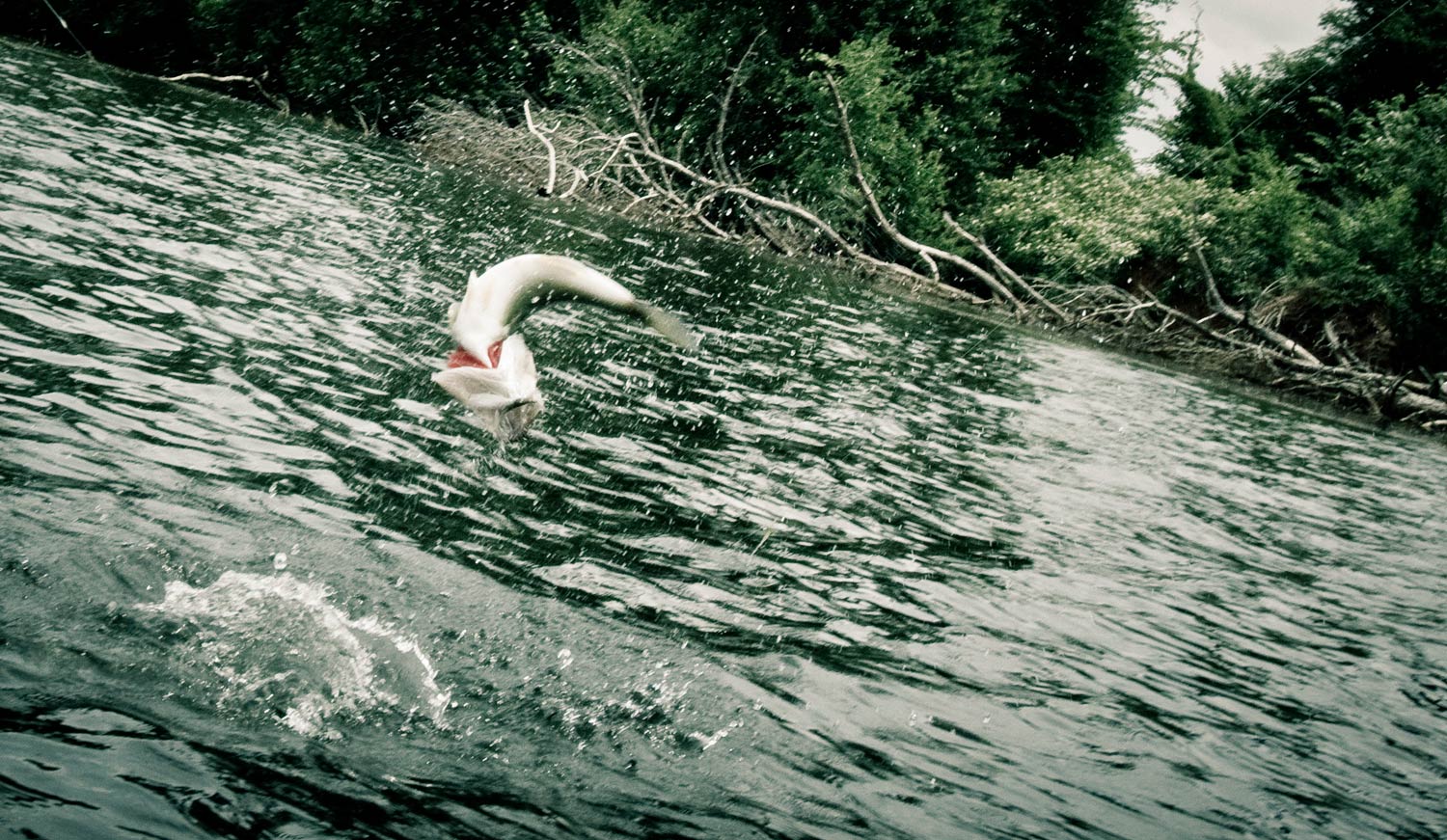
In the fall, however, fly anglers should pay less attention to deep water on the main lake and start focusing their time fly fishing up in the creeks and backwater coves, found in the fingers of the lake. The migration of the forage food into the shallow water areas of the lake is great news, because it’s much easier to target the following bass with fly fishing gear. When the days begin to get shorter and we start getting successive nights with temperatures dropping below 50 degrees, fly anglers should start looking for the fall bass bite to heat up. Below are some 8 tactics I use to help me catch bass with fly fishing gear during the fall months.
Read More »Bobber Wars: Episode 2, Attack Of The Clones

By now you probably know that Deeter and I are having a little fun.
Yes, Kirk Deeter and I have been up to something. An experiment, a hoax, a stunt even, but not without some basis in fact. The two of us have been talking about this for some time and even though we’ve been playing roles in this debate, the debate itself is all too real. Our idea was that we, as friends, could publicly have the argument that’s been raging at fly shops and bars around the country for some time.
Judging from the comments, it’s an argument many of you have already been part of. It’s way too much fun to stop now, so I will gladly fire another round back at Mr. Deeter, and then we’ll put it to bed.. Just know, as you read the rhetoric from both of us, that it’s a mix of our true feelings and some of what we hear at the fly shop. Kirk and I are blood brothers and the bobber isn’t going to change that. If you see us together, we’ll be laughing, drinking and probably fishing and Kirk will likely be wearing a dress. That’s just Deeter, there’s only so much you can do with him.
So here’s the next round. I hope you enjoy it, and if you take anything away from this game, let it be how silly this argument really is and how, like Kirk and I, all anglers should be friends.
Mrs. Deeter,
I started this with a Star Wars reference, so let me put a finer point on it. You have fired off another sortie, and just like an Imperial Storm Trooper, hit nothing! Whether or not you are calling for regulations, a gentleman’s agreement or a constitutional amendment banning bobbers is not the issue. The issue isn’t the regulation, it’s your elitist attitude.
I’m not curious to see what would happen on your bobber-free water. I’ve already seen it and it has nothing to do with the trout. It has everything to do with a flock of egotistical anglers creating a safe space where they can’t be bothered with the uncouth and under-skilled. Perhaps we should give you your bobber-free water just to get you off of ours!
OK, that’s over the top, but seriously, why are you so pissed about the bobber?
Let’s be honest, it has nothing to do with fish
Read More »Sunday Classic / Has Distance Casting Hijacked Rod Design?
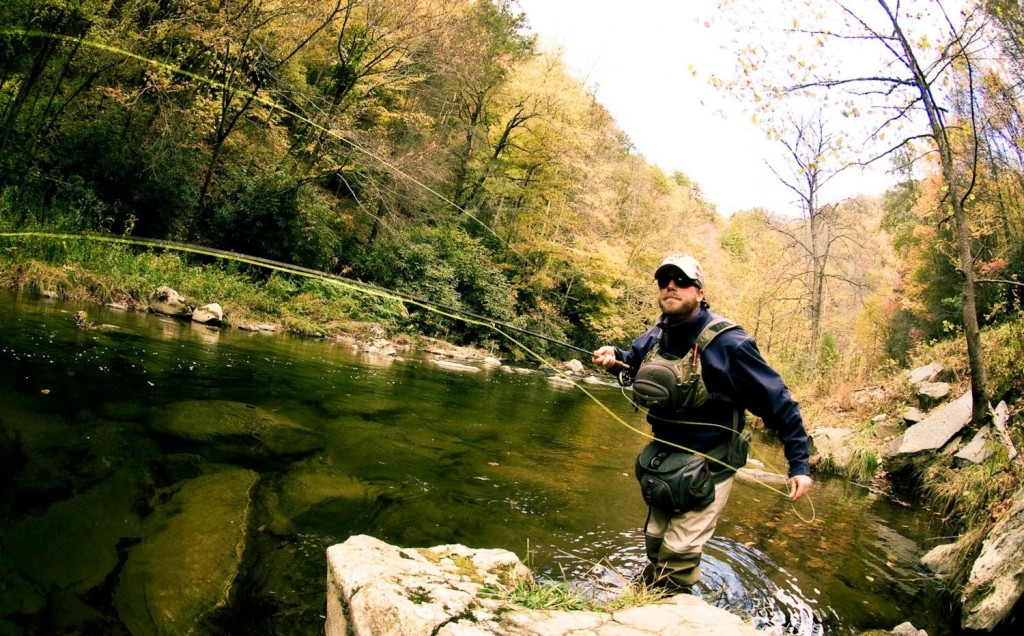
How often do you really make a 100 foot cast?
Every time I visit a fly fishing trade show and walk by one of those 100′ casting ponds filled shoulder to shoulder with anglers all trying their best to land their fly on the far end of the casting pond, I ask myself, “is that really what the majority of anglers today think fly casting is all about”? A part of me thinks we should shorten those casting ponds all together, and instead throw out a bunch of target rings at random distances starting out at 20 feet. Maybe that would paint a clearer picture of what fly casting is about and how a fly rods performance should be judged. Casting a 5wt and shooting backing through the tip of the rod is hard to do, and something to be proud of, but is it really what we find ourselves doing when we’re out on the water trout fishing?
Furthermore, have we all become so tunnel visioned that we feel it’s correct to judge a fly rods performance and craftsmanship based on how much fly line it can pick up and carry, and how far we can cast a fly with it? That’s not how
Read More »Saturday Shoutout / Bowhook Sharks
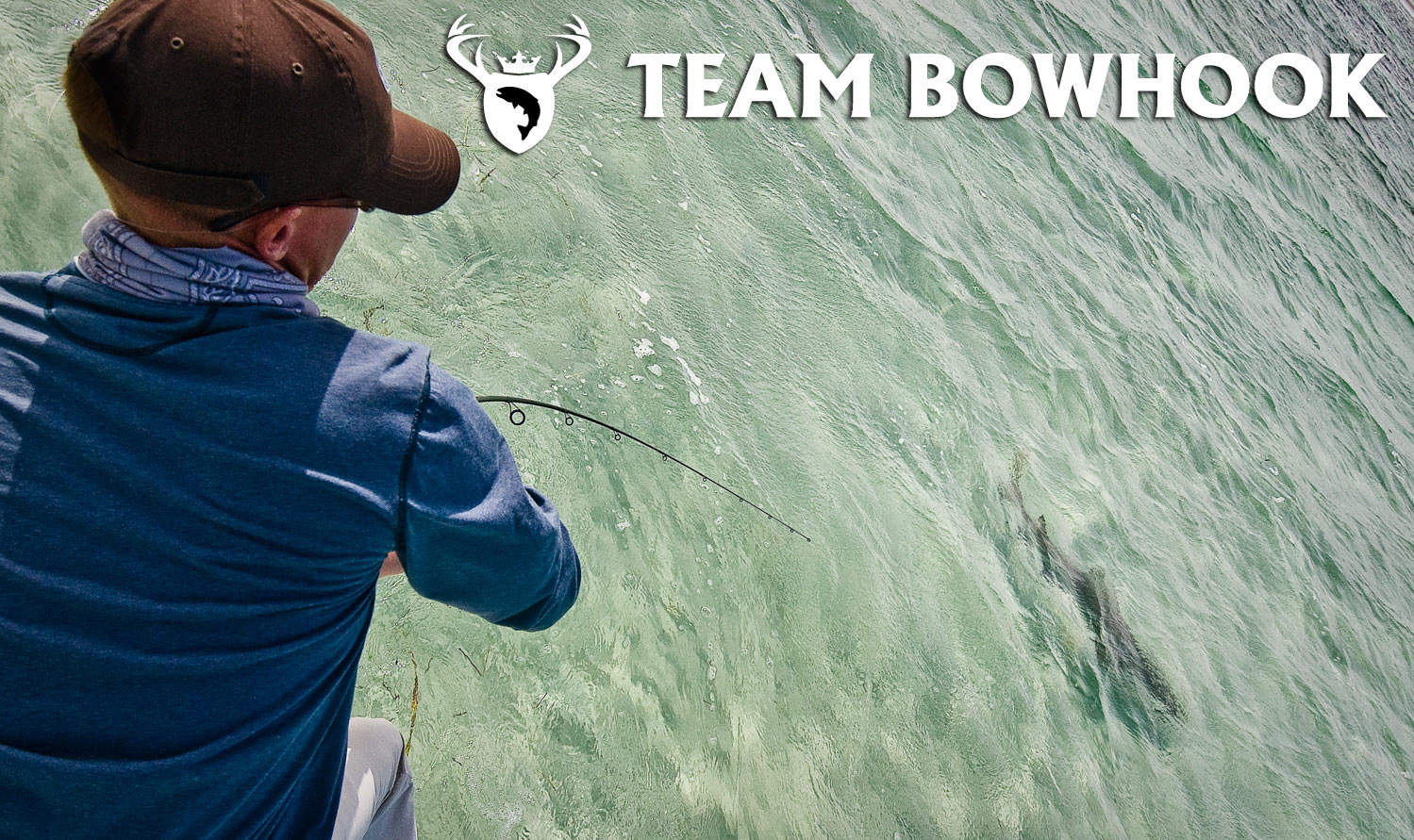
It’s shark week on South Andros!
If you read my recent article on shark safety, you know I had a little run in with a shark a few weeks ago. In that article I mentioned that my buddy Michael Poulin caught a little black tip shark that morning. Bonefishing had been tough, due to a sudden high pressure system and when we found a school of bonefish they were being hammered by a pair of sharks. I asked Mike if he wanted to catch one of them and he jumped on the chance.
If you want to feel a big fish pull, sharks will make it happen for you. We get them on flies all the time, but we didn’t have a shark rig for the fly rod, so Mike got this one on bait. Mike got a good fight out of the fish and we drew the sharks off of the school of bonefish. Mike handed me his video camera and we got it on film for his blog Bowhook , including a big black tip stalking the one Mike had on.
CHECK OUT “SHARKS ON THE FLATS”
Read More »New Rods And Reels From Redington for 2016
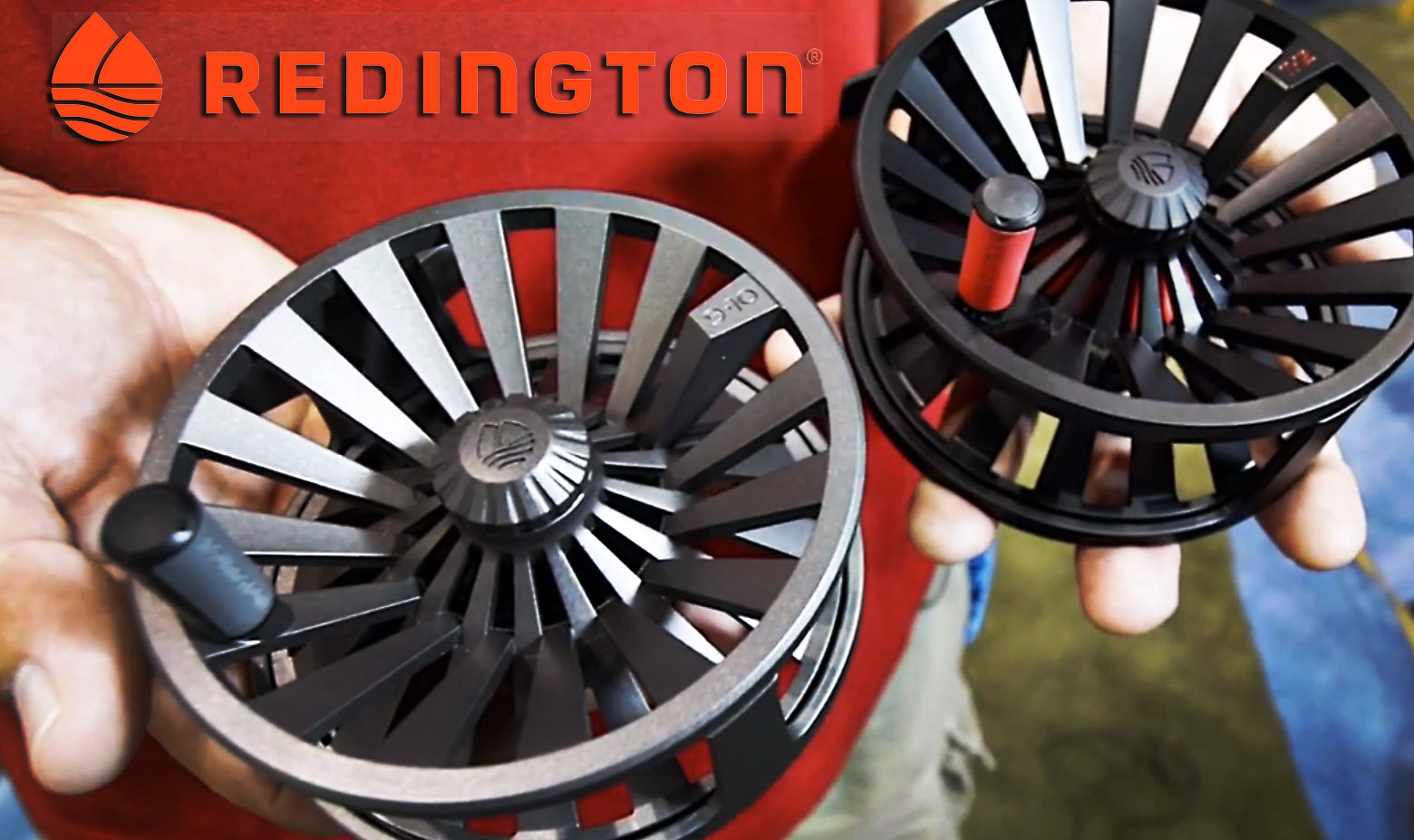
Bold new designs from Redington this year.
Paul Richardson, the new industrial designer for Redington, is making his mark with some bold and innovative design strokes on the new rods and reels. The new offerings are sleek and down to business.
The new Chromer two hand rods replace the prospector line. I’ve not cast them but the action feels very nice and there are some sweet features like rubber ends on the cork grips that make handling mono running lines easier. The Chromer is available in switch and spey.
The new Hydrogen single hand rods are super light weight with a crisp action. The black blank is even visible at the reel seat. No spacer material to add weight. There’s a full line of standard lengths plus some 10 & 11 foot nymphing rods.
The Behemoth is a powerful big game reel with 30 pounds of drag and a bold new look. The Zero series reel is super light weight with a great click drag for old-school sound. As always each of these products is at a very competitive price point, offering serious hardware for the budget minded angler.
WATCH THIS VIDEO TO GET A LOOK AT THE REDINGTON RODS AND REELS.
Read More »Why All Fly Anglers Should Be Watching Their Back Cast
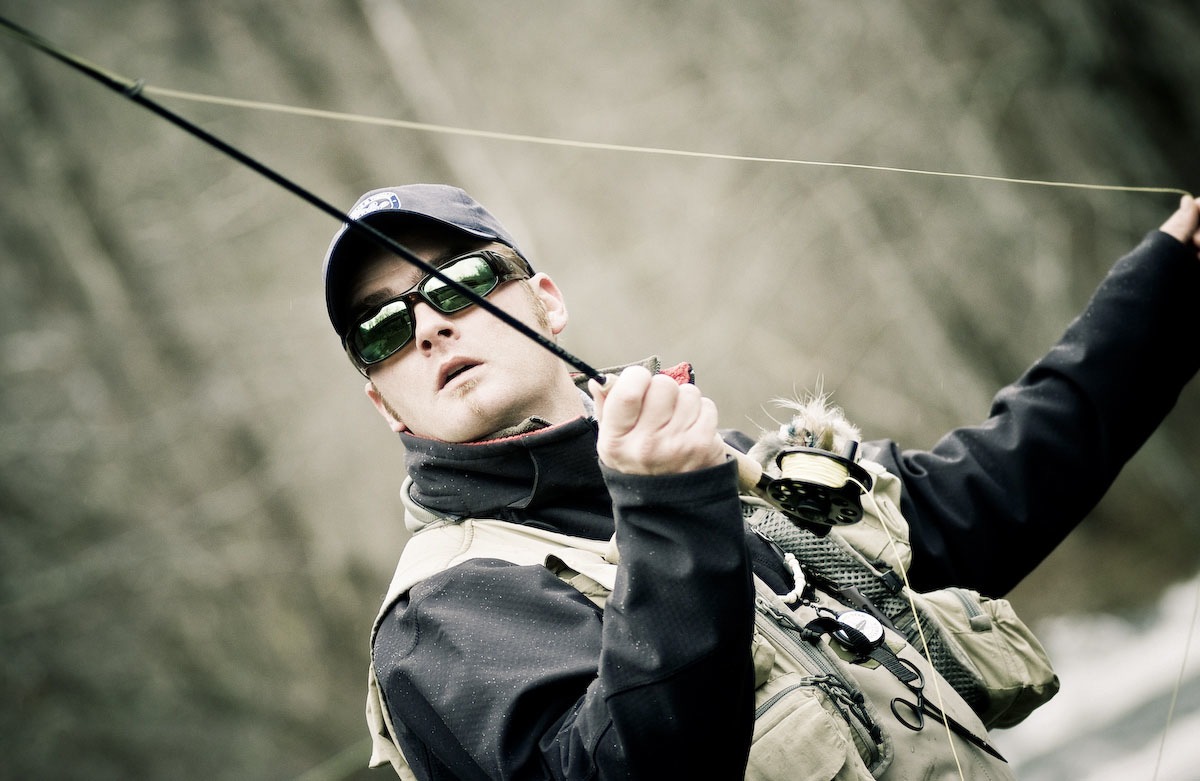
By Kent Klewein
No fly angler should ever feel ashamed to watch his/her back cast when trout fishing.
In fact, if you make a habit of consistently watching your back cast, you’ll become a much better fly caster overtime and catch a good deal more fish when you’re on the water. Just because Brad Pitt in the movie, A River Runs Through It, didn’t watch his back cast in most of the fly fishing scenes throughout the film, doesn’t mean fly anglers should follow his lead. The best fly casters in the world watch their back cast when presentations call for it. They might not do it all of the time, but they sure as heck don’t think twice about doing so, when a specific presentation calls for it.
The reason I’m taking the time to talk about this today is because most of my clients struggle with the idea of watching their back cast. From my point of view, they shy away from doing so, because they feel like they’re raising up a red flag that signals, “Hey everyone, I’m a rookie.” But that notion is completely untrue. In reality, if a more advanced fly caster walks up on you and you’re casting poorly because you’re not watching your back cast, he or she is probably going to be thinking, “That poor angler, all he/she needs to do is make an effort to watch his/her backcast and most of those casting flaws would disappear.” If you’ve hit a plateau with your fly casting skills, more times than not, the best thing you can do to take your skills to the next level is start paying more attention to watching your back cast. Put it to the test next time you’re on the water especially if you’re a newcomer or intermediate fly angler. And don’t think it only applies to trout fishing in freshwater, it can be just as important, sometimes even more important, when fly fishing in the salt.
4 REASONS WHY WATCHING YOUR BACK CAST CAN IMPROVE YOUR FLY CASTING AND FISHING
Read More »Shark Smart, Staying Off Of The Food Chain
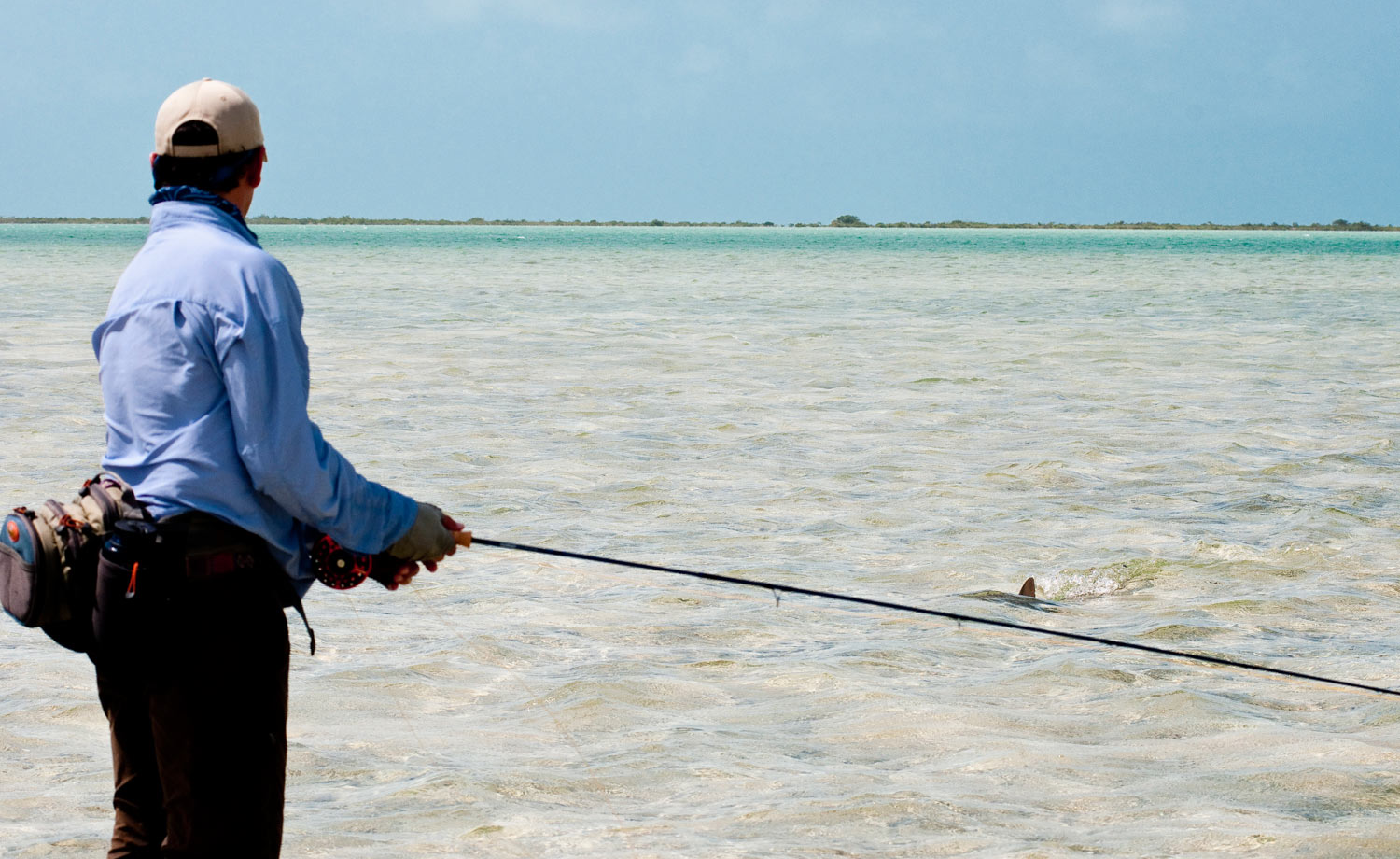
Here’s a cautionary tail and some tips that might come in handy one day.
I’ve spent a lot of time around sharks. Little babies and fish bigger than a flats boat. Generally speaking, I’m not afraid of them but I know when to cut them a wide berth. I’ve had a few interesting encounters but never a really close call, until recently. I know, that is I’ve been told, how to handle a really aggressive shark but it’s a long walk from knowing to doing.
I fish for these toothy, ill tempered fish from time to time and I’m glad I do. The better part of catching a shark is reading its body language. That is knowing by observation which fish are likely to eat and under what circumstances. That is also the most important skill in avoiding a sticky situation. If you know what a shark is thinking, you know how to approach him. That said, sharks are stupid animals which are capable of any kind of random behavior. Caution is always the best approach.
When you are wading in saltwater, sharks are unavoidable.
They have very poor eyesight and hunt by smell. They can smell you in the water from a long way off and they will come to see if you are interesting. Once they get close enough to see you, they generally want no part of you and bolt out in a hurry. Being blind as bats however, they get pretty close before that happens and that unnerves a lot of anglers. If you’re not use to it, your reaction may not be the best.
In a shark’s mind, food is anything that runs away. If a shark swims up to you and you try to get away from it, you’re sending a signal that you are worth further investigation. That investigation may or may not involve teeth but it’s an interaction you don’t want to have. It’s best to draw a line early. Standing your ground is often enough, but once in a while some aggressive behavior is necessarily. A push pole to the head, a loud splash like jumping up and planting both feet hard and, worst case scenario, a stomp on the head.
The best case is to not get into a bad situation to start with. If you see a shark behaving badly, swimming quickly and searching side to side, cruising around with its dorsal fin out of the water, being aggressive with fish or other sharks, it’s best to leave him to it. Stay in the boat, on the shore, or if it’s too late for any of that, at least don’t exasperate the issue by hooking a fish. That will keep you out of trouble most of the time.
THAT SAID, HERE’S HOW I RECENTLY FOUND MYSELF IN A TIGHT SPOT WITH A BIG SHARK.
I was wading in knee- to thigh-deep water, approaching a school of bonefish
Read More »Sunday Classic / Getting a Grip on Spey Casting
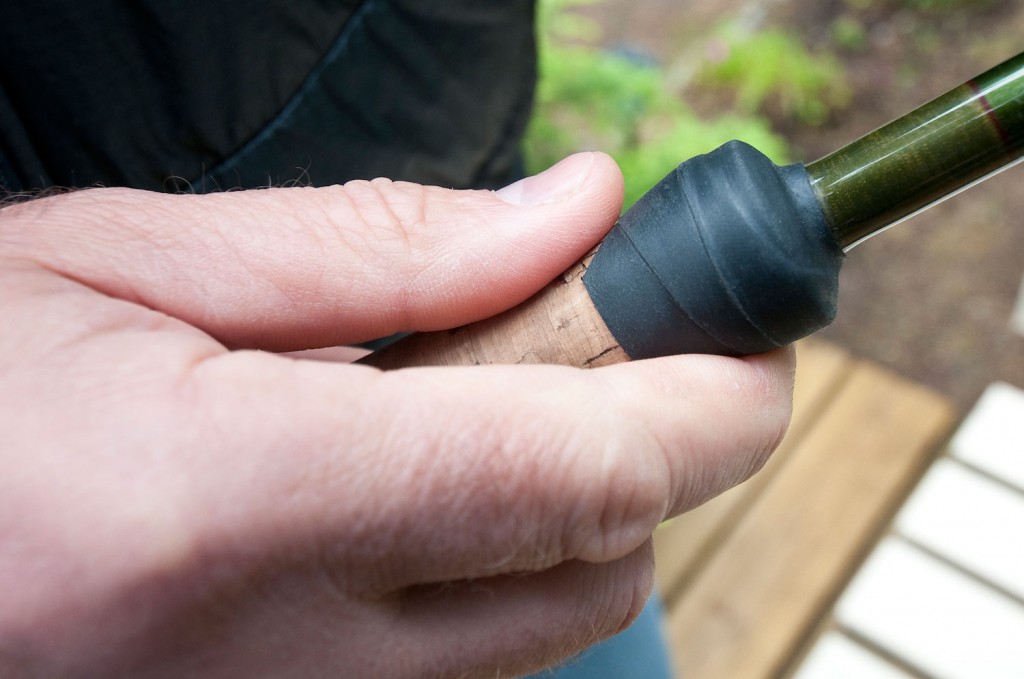
I love casting mono running line on my Spey rods. At present, I’m using Rio Slick Shooter. It lives up to the name. I saw a big improvement in my distance when I made the switch. It casts like a dream and fishes well but the down side of any mono running line is that it gets slick and hard to hold when you’re casting. There’s nothing more disappointing than losing your handle on a cast. That’s when the running line slips from between your fingers and the cork just as you make your forward casting stroke. The rod unloads and your cast piles up in a useless heap. Fortunately my buddy Andrew Bennett showed me a cool trick to solve this problem. Simply wrap the end of your grip with silicon tape. You can find it in the plumbing department at Home Depot under the name Stretch and Seal. This tape has a natural friction that makes it stick to itself, not your rod. There’s no adhesive so it doesn’t leave a residue on the grip. It does, however, give you a nice slip-free surface to pinch your running line against. It doesn’t get slippery when it gets wet. Heat and cold don’t disturb it and it doesn’t come off in water. So for about eight bucks you can put a stop to slippery mono running line on all your Spey rods. Louis Cahill Gink & Gasoline www.ginkandgasoline.com hookups@ginkandgasoline.com Sign Up For Our Weekly Newsletter!
Read More »